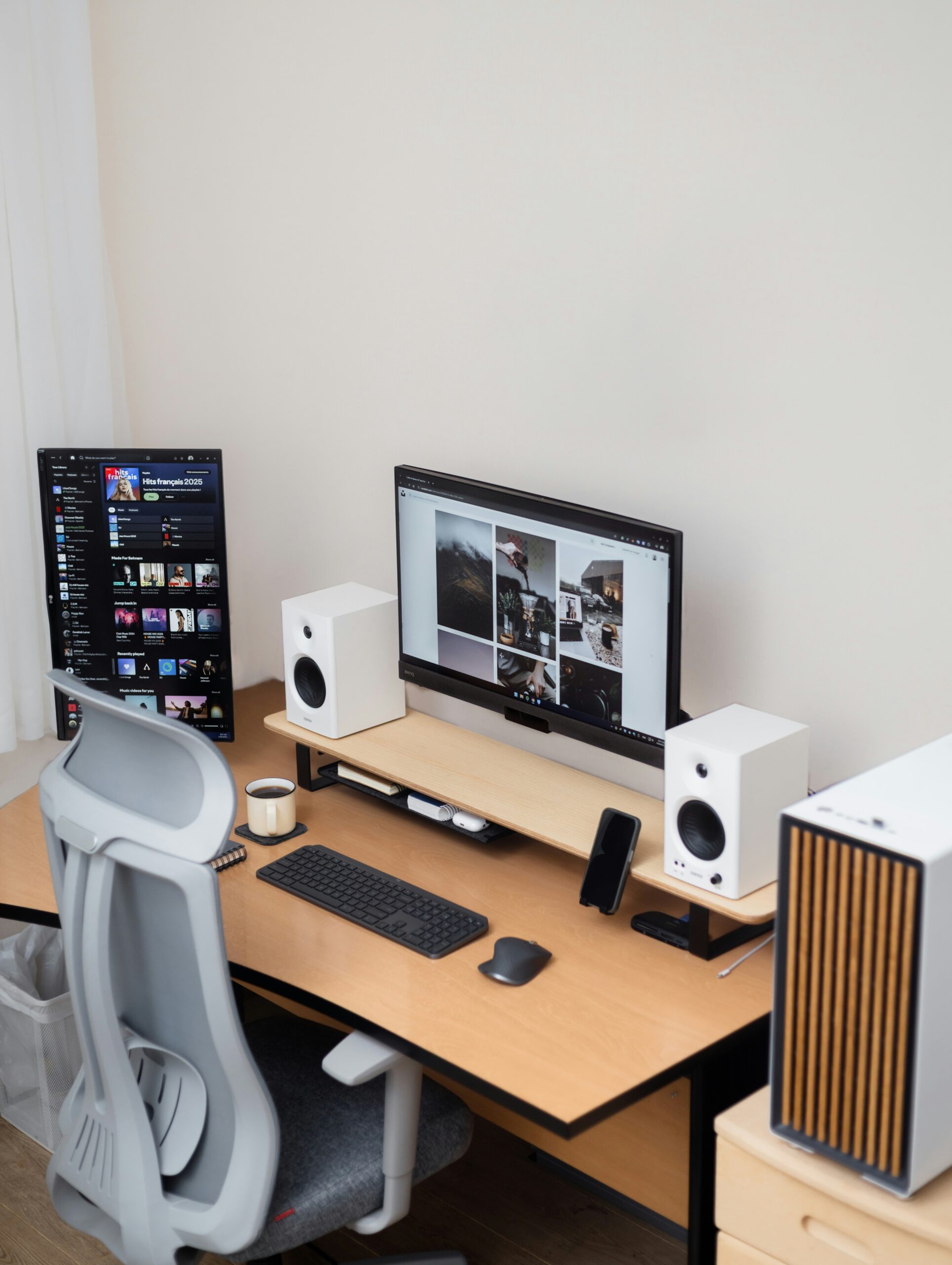In a competitive digital landscape where businesses seek improved online visibility and superior lead generation, evaluating a web design portfolio is crucial. This guide, crafted by a team of web services experts, presents six core criteria to assess the quality, technical proficiency, creativity, communication, and industry relevance of a web design portfolio. By understanding these evaluation parameters, companies can select partners capable of delivering fast, user-friendly, and conversion-focused websites.
Key Takeaways
- Clear navigation and structure are crucial for user experience and SEO.
- High-quality work samples with detailed case studies build credibility.
- Technical proficiency is evidenced through modern coding and responsive design.
- Originality in design differentiates a portfolio and drives engagement.
- Professional experience and clear communication enhance client trust.
1. Establishing Overall Structure and Navigation in a Web Design Portfolio

A web design portfolio improves credibility by establishing a clear overall structure and navigation, ensuring that visitors find information quickly and efficiently. Research indicates that websites with intuitive navigation can improve user satisfaction by over 30% (Nielsen Norman Group, 2020). A well-organized structure highlights the designer’s ability to balance content hierarchy with responsive web design, creating an experience that enhances both lead generation and customer satisfaction.
Effective navigation utilizes visual hierarchy, clear labeling, and consistent layout patterns that mirror industry best practices. For example, a portfolio that employs a sticky header, breadcrumb trails, and intuitive category groupings reflects a deep understanding of usability testing and page layout design. Our company integrates these elements to create websites that reduce bounce rate and increase conversion rates, driving traffic and revenue for clients.
Designers should ensure that navigation menus are accessible and optimized for mobile apps. By incorporating responsive design principles and clear call-to-action (CTA) buttons, users can effortlessly interact with content on devices with varying screen sizes. This focus on navigation supports search engine optimization as well as user experience design.
The integration of semantic HTML5 elements like and significantly contributes to clearer indexing by search engines. Successful examples include portfolios that highlight their client case studies and interactive prototypes prominently, thereby emphasizing consistent navigation and overall structure.
2. Analyzing the Quality of Work Samples in a Web Design Portfolio

Work samples in a web design portfolio immediately improve credibility by showcasing projects that reflect both design aesthetics and technical skill. Evaluating these samples is essential because they offer concrete evidence of a designer’s ability to deliver responsive, conversion-driven pages. According to recent research from Adobe (2019), portfolios with comprehensive case studies can increase client engagement by up to 40%.
High-quality work samples are accompanied by detailed project descriptions, including the challenges faced, the design strategy applied, and measurable outcomes such as increased conversion rates or reduced bounce rate. For instance, a portfolio that details the redesign of a client’s website with a 25% improvement in load times demonstrates technical proficiency and project management expertise.
Moreover, work samples must incorporate evidence of strategic planning, such as storyboarding, wireframing, and usability testing. These artifacts convey the designer’s methodical approach to translation of customer needs into a digital interface. The use of conversion-focused layouts, consistent branding, and adaptable white space all illustrate how superior design can support both search engine optimization and user experience.
When analyzing portfolios, look for the inclusion of performance metrics, visual prototypes, and client testimonials that communicate successful project outcomes. Such examinations of case studies provide insights into how the designer communicates with clients and aligns creative vision with business objectives.
3. Evaluating Technical Proficiency Through Portfolio Content

Technical proficiency in a web design portfolio enhances confidence by showcasing adherence to coding standards, innovative use of technology, and robust development practices. Portfolios that communicate technical expertise demonstrate proficiency in HTML, CSS, and JavaScript and modern frameworks and content management systems that support fast, secure, and scalable designs.
For example, research by the World Wide Web Consortium (W3C, 2021) has shown that websites that follow semantic HTML practices and accessibility standards can achieve a 20–35% improvement in overall user engagement. Designers who emphasize code readability, SEO optimization, and well-documented processes reveal their commitment to delivering long-term web performance and improved web page ranking.
Detailed portfolios often include code samples, GitHub repositories, technical case studies, and performance benchmarks that reflect the designer’s technical skill. Whether it is through the use of responsive design frameworks or the incorporation of progressive web app (PWA) principles, technical proficiency fosters trust among potential clients.
Our company’s approach of incorporating clean code practices and automation tools in every project ensures that each website not only functions flawlessly but also achieves high scores in usability testing. This technical rigor is a critical component in supporting search engine optimization and enhanced user experience.
4. Measuring Originality and Creativity in the Portfolio Presentation

Originality in a web design portfolio increases visibility by showcasing unique design approaches and creative problem-solving techniques. A creative portfolio improves brand differentiation by blending storytelling with innovative design, ensuring that each project not only stands out visually but also communicates its purpose effectively. Studies by AIGA (2020) reveal that portfolios with higher creative inputs achieve up to 50% more client inquiries.
Creative designs integrate a variety of elements such as custom illustrations, dynamic animations, and inventive layouts that deviate from standard templates. By emphasizing originality, designers demonstrate their capacity to fuse art with technology, using creative typography, effective color contrasts, and micro-interactions that improve both aesthetic appeal and usability.
Case studies presenting before-and-after redesigns where creative interventions lead to measurable improvements—such as a 30% increase in user retention—illustrate how originality can be quantifiably beneficial. For instance, a portfolio that uses bespoke iconography and unusual grid systems shows an innovativeness that supports both creative expression and strategic marketing.
In addition, the presentation quality, including the use of interactive prototypes and well-organized galleries, provides further evidence of a designer’s creative capacity. Overall, originality and creativity are indispensable for positioning a portfolio as a high-impact tool in digital marketing.
5. Assessing Communication and Concept Articulation in a Web Design Portfolio
Communication in a web design portfolio improves client trust by clearly articulating complex design concepts in accessible language. Effective portfolios use concise project summaries, visual storytelling, and clear case studies to demonstrate how design decisions support business objectives. A study published in the Journal of Digital Communication (2022) found that portfolios with well-articulated project narratives had a 27% higher client conversion rate.
A designer who explains the rationale behind layout choices, color schemes, and interactive elements ensures that potential clients understand the strategic thinking behind each project. The use of storytelling in web design portfolios, including context-driven narratives and side-by-side comparisons of concept versus final implementation, enhances transparency and trust.
This communication is supported by well-defined project briefs, client testimonials, and clear performance data. The inclusion of client feedback integrated into the design narrative conveys an understanding of user experience design and emphasizes collaboration, which is critical for lead generation and customer satisfaction.
Our company’s expertise in creating conversion-focused websites is demonstrated through portfolios that include detailed client case studies and strategic design rationales. By articulating concepts clearly, web design portfolios not only showcase creative and technical prowess but also drive actionable insights for potential clients.
6. Recognizing Professional Experience and Industry Relevance in a Portfolio

Professional experience in a web design portfolio improves credibility by highlighting a designer’s track record with reputable clients and successful projects. Portfolios that demonstrate industry relevance include detailed project histories, long-term client relationships, and a display of awards or professional recognitions. Research by Clutch (2021) indicates that portfolios with clear evidence of professional experience increase client trust by over 35%.
Designers should include client logos, certifications, and case studies that detail measurable results such as conversion rate improvements and enhanced user engagement. By showcasing a variety of projects spanning different industries, a portfolio not only validates technical skill but also demonstrates versatility and adaptability to changing market conditions.
Emphasizing industry relevance means the designer explains the strategic impact of each project, reinforcing how thoughtful design translates into business results. Examples include redesign projects that boost website traffic by 40% and user experience improvements that significantly reduce bounce rate. These evidence-based narratives present a compelling case to potential clients looking for reliable and experienced web services.
Our company’s commitment to top-tier web development is underscored by portfolios that reflect years of experience, certifications, and industry partnerships. This recognition fosters a sense of trust and positions the designer as a proven authority in web services, enhancing overall customer satisfaction and driving lead generation.
What defines a well-structured web design portfolio?
A well-structured portfolio features intuitive navigation, clear menus, and responsive layouts that improve user engagement and SEO.
How can work samples in a portfolio demonstrate quality?
High-quality work samples include detailed case studies, clear performance metrics, and evidence of successful usability testing.
Why is technical proficiency important in a web design portfolio?
Technical proficiency shows mastery of coding standards, use of modern frameworks, and overall website performance improvements.
How does originality in design impact a portfolio’s effectiveness?
Originality enhances memorability through unique visuals and creative storytelling, leading to higher client engagement.
What role does professional experience play in evaluating a portfolio?
It builds market credibility by showcasing reputable client work, certifications, awards, and long-term project success.
Evaluating a web design portfolio using these six core criteria provides a comprehensive framework for selecting partners who deliver excellence across usability, technical proficiency, creativity, communication, and professional experience.
Each criterion encapsulates crucial elements—from intuitive navigation and robust work samples to advanced technical execution and creative storytelling—that drive superior online performance.
By applying this structured approach, businesses can confidently assess portfolios that lead to an enhanced online presence, increased lead generation, and sustained growth.
Ultimately, a well-evaluated web design portfolio is a strategic asset, aligning design innovation with measurable business outcomes.
